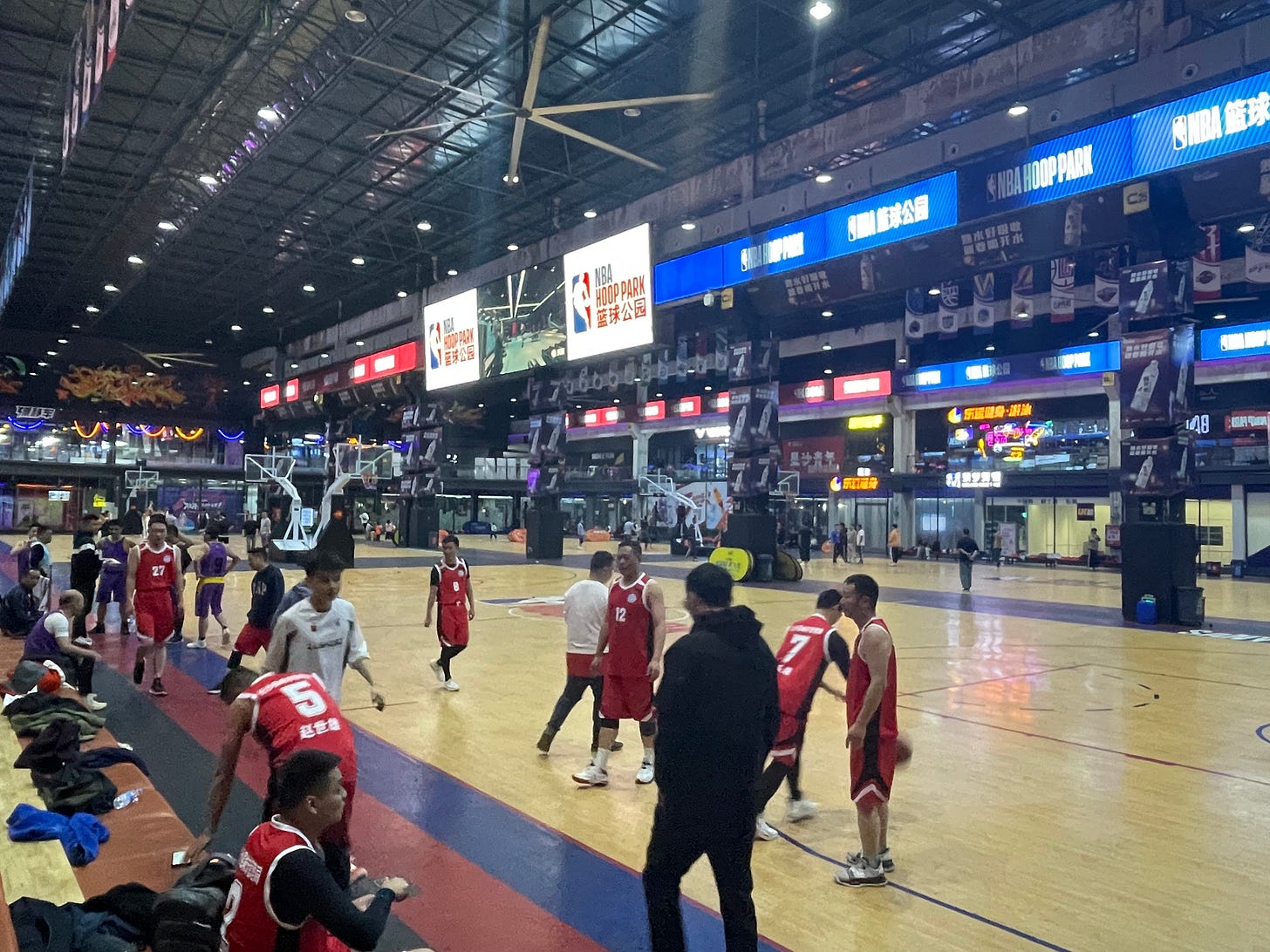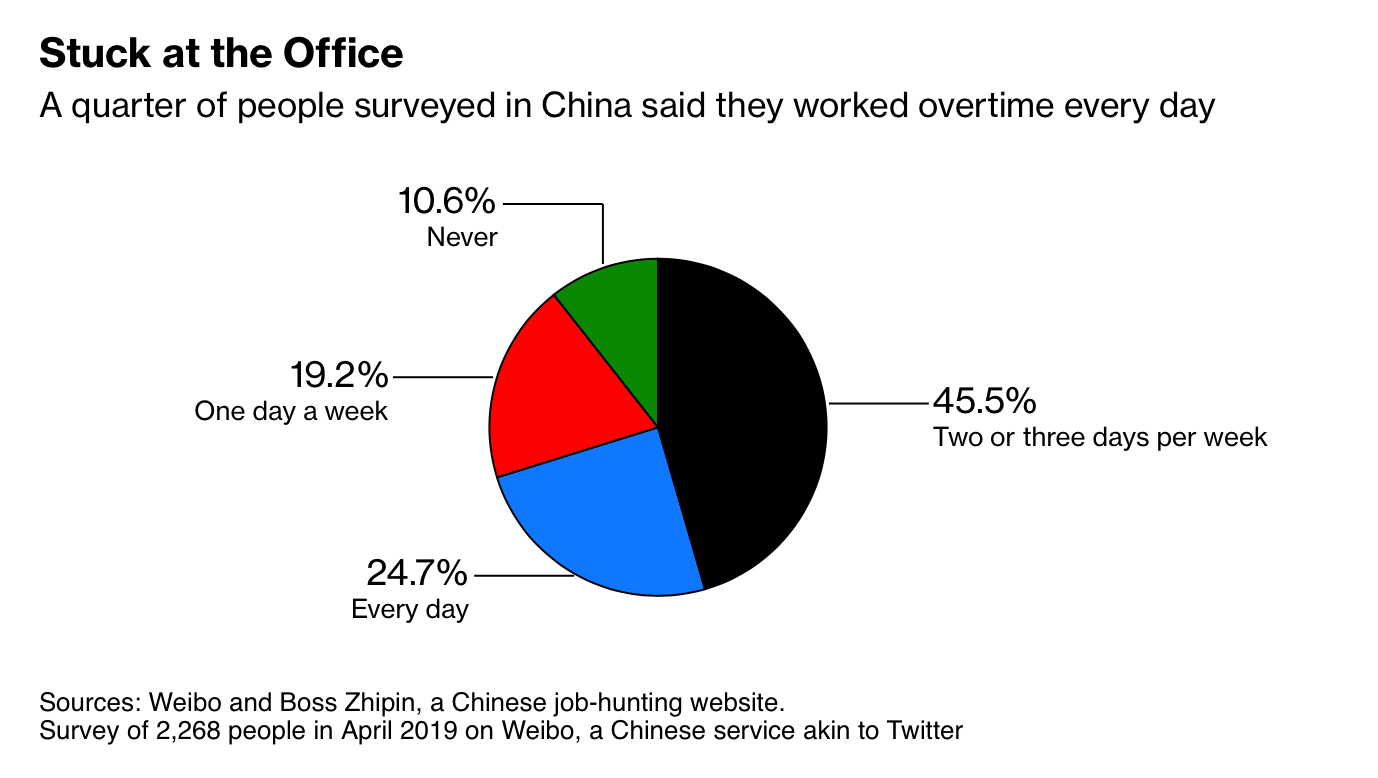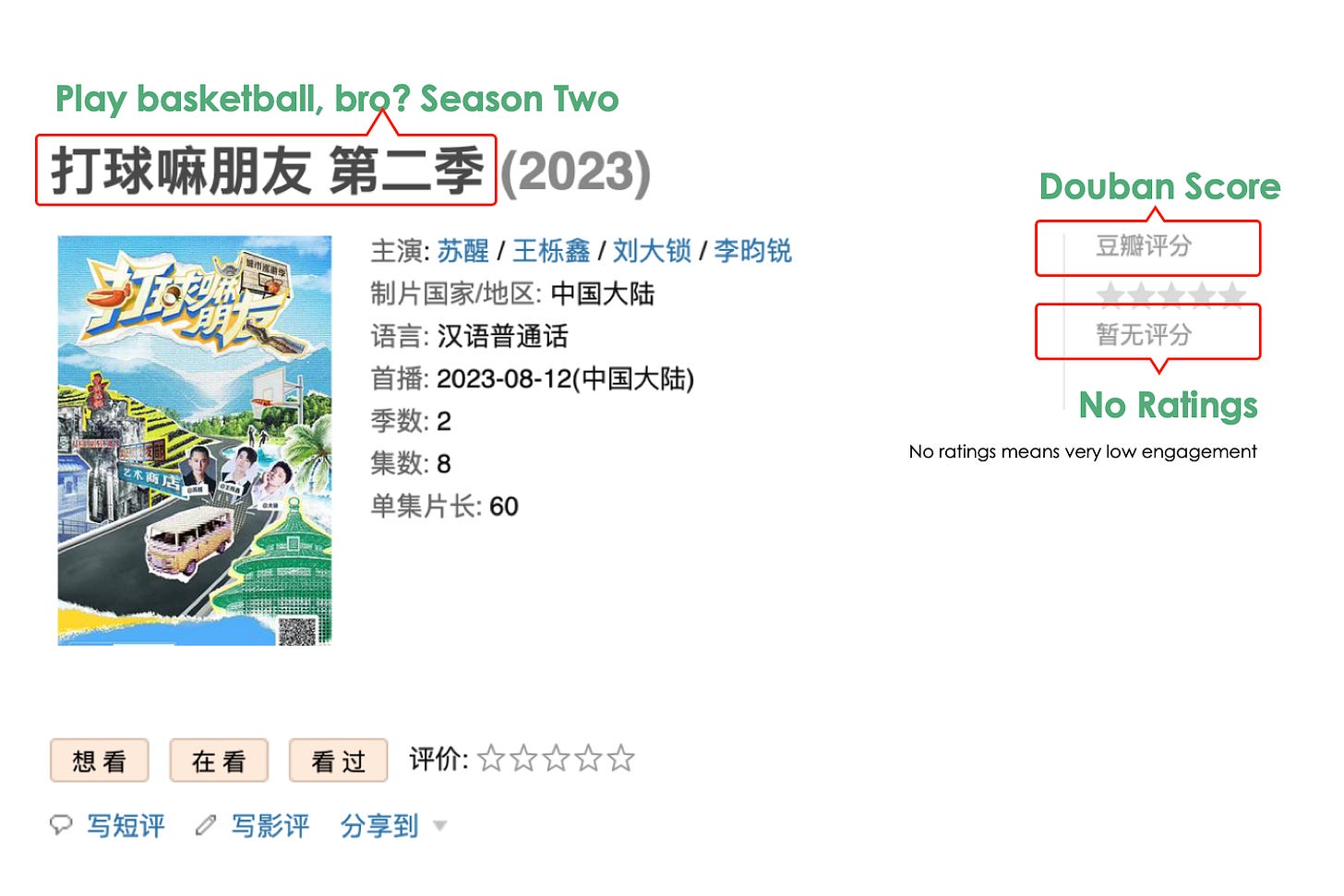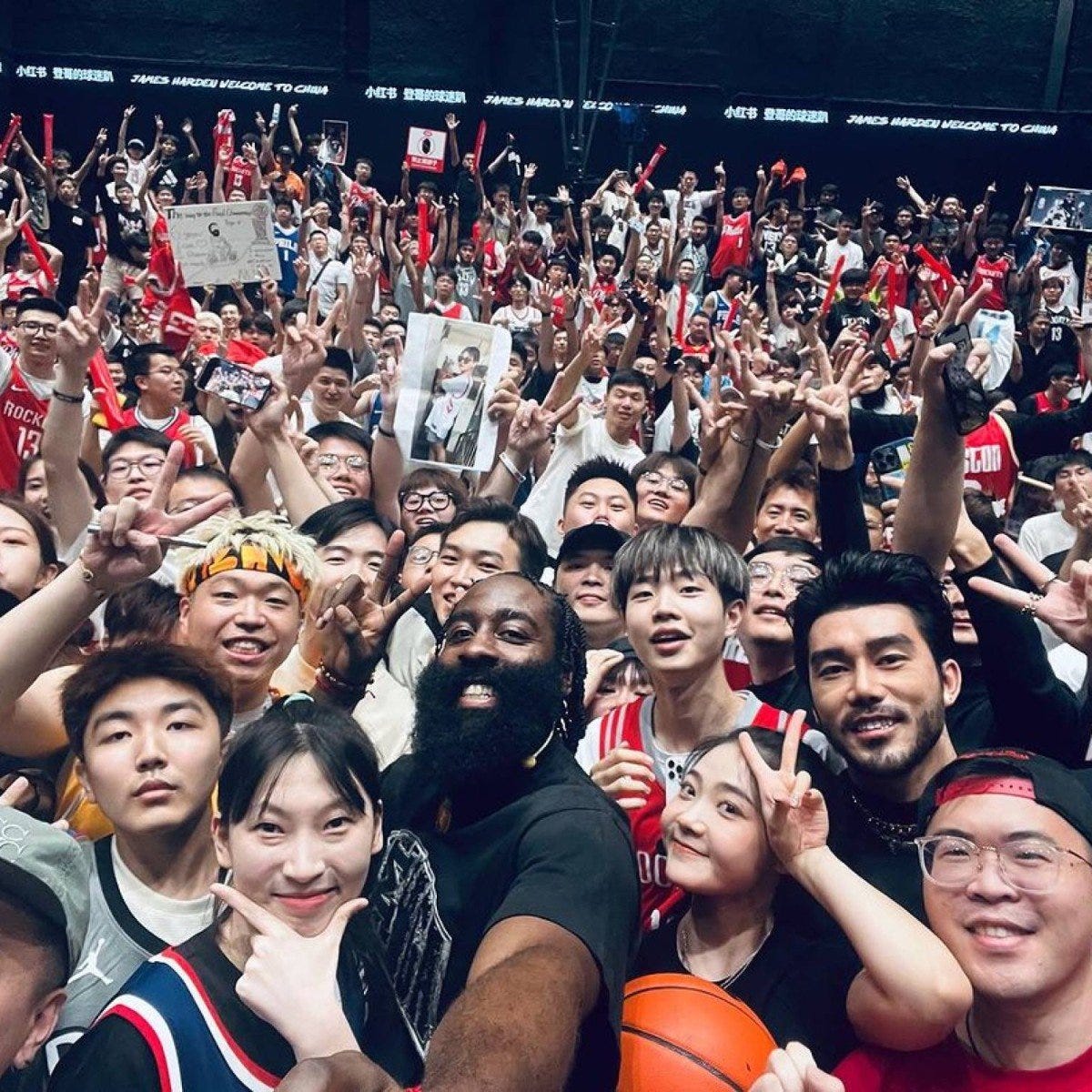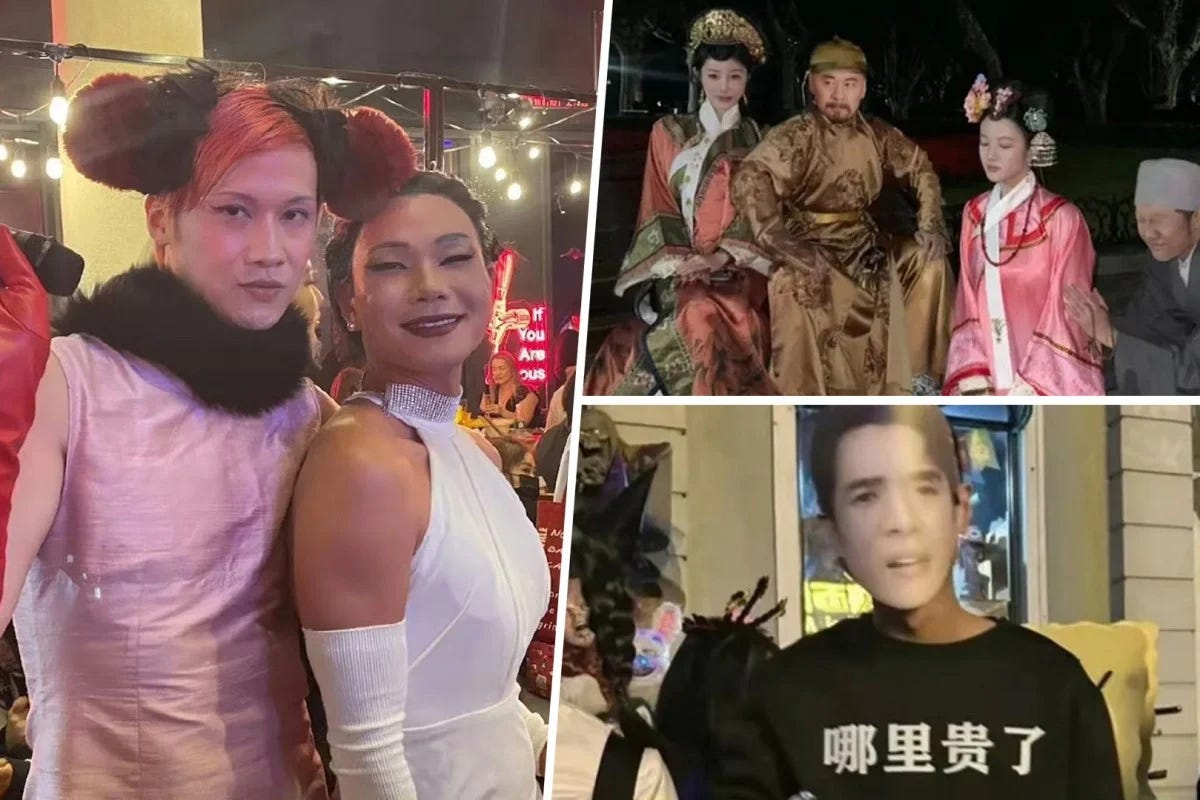The NBA and China: Can the bond with fans be repaired? (Part 2)
If the NBA is to thrive in the Chinese market for the long haul, bringing a more consistent and high-quality experience across all channels is required.
Article Highlights
As the NBA attempts to improve its position in China, they face a number of limitations regarding control over their brand as well as a range of compilations that are out of the direct control of the NBA.
The most successful engagements include bringing celebrity players from the US to engage with Chinese fans, while many other initiatives have fallen flat.
In the end, a lack of brand consistency and confusion regarding value proposition and localization strategy, threatens the NBA’s continued power in the Chinese market.
In the previous episode, I broke down the challenges that the NBA is currently facing in the Chinese market, including a less intimate connection with the audience, more obstacles to watching the games, and in the eyes of many users, a decrease in the attractiveness of the matches. This has resulted in more fans wanting to distance themselves from the NBA.
However, there are recent signs that the winds are changing.
Recently, the interaction between Xi Jinping and Newsom (Xi accepting the Warriors jersey from Newsom) has sent a positive signal to the NBA.
Xi didn't explicitly endorse the NBA, but his acceptance of gifts and friendly gestures signifies a high level of openness and appreciation within the Chinese leadership. It implies that the CCP may shift public sentiment from “avoiding ideological attacks on the NBA”(as I mentioned in my previous episode, the domestic public opinion on the NBA's ideological criticism has basically ended) to “tacit approval of the NBA's business development”.
There is no way to be sure, but it seems that the Chinese government stance is moving towards a more neutral position, possibly to test the viability of repairing this relationship further.
In the end, this may be a further catalyst for the NBA to increase its investments in China.
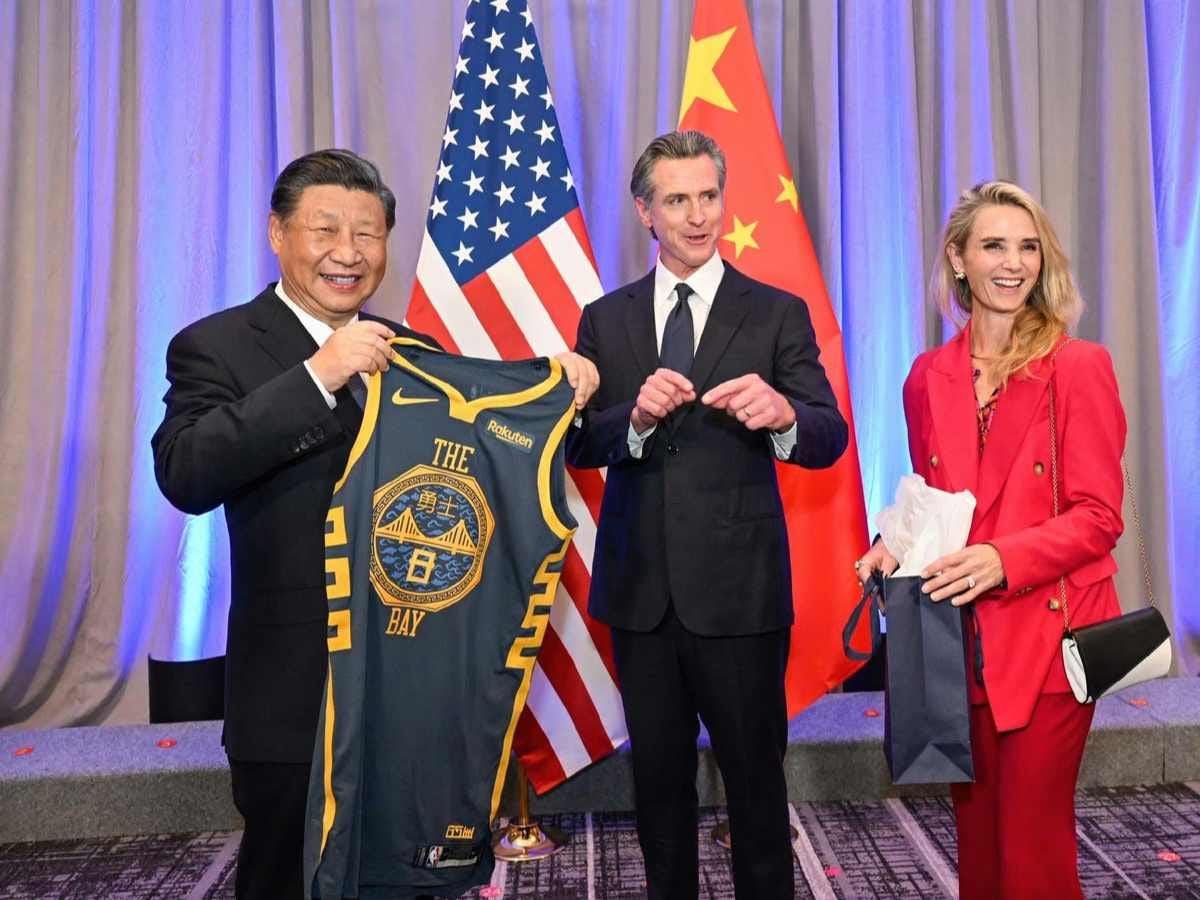
In fact, following the 2019 Morey incident, the NBA continued to persistently expand its presence in China, even during intense ideological debates and boycotting campaigns.
As we discussed in Part 1, the NBA must localize further and resonate with Chinese fans if they are to win back support.
China is currently experiencing a monumental shift in economic activity. That shift is the movement of people and business to lower tier cities. COVID was a powerful catalyst, but the shift was already occurring.
The problem of imbalanced development has long existed. However, inland and underdeveloped cities are catching up with the pace of first-tier cities. In the first three quarters of 2023, Beijing and Shanghai are still the most developed cities in China, However cities with the fastest GDP growth rate are not first-tier cities,but Chengdu and Zhengzhou. The NBA's recent investment trajectory mirrors this subtle shift in China.
A noteworthy but underrated effort in localization outside of tier 1 cities is the NBA HOOP PARK, which aims to create a top-notch physical experience platform for Chinese fans. Through collaborations with local governments, the NBA has already implemented 13 projects in 11 cities, with ambitious plans to expand to 334 cities nationwide in the next ten years. Most of these venues are located outside mega tier 1 cities, and I just visited their Meixi Lake stadium in Changsha. The ticket seller told me that it is almost always packed after 6:30 pm, as people like to come and play basketball after work. From the video and snapshot below, you can see the courts are crowded with people actively playing basketball.
In the digital realm, the NBA dropped Doyin (Original Chinese Tiktok) for Kuaishou ( often referred to as "Kwai" in global markets), specifically targeting lower-tier markets with a certain content approach that appeals to those outside of the flashy mega cities of China.
From the perspective of the NBA, they are being encouraged to also focus their activity towards the up-and-coming cities throughout China. It is unclear whether the NBA or the Chinese government made this decision, but it is certainly what is happening.
This activity is heavily focused on both physical and virtual spaces in China, but instead of targeting fans in top-tier cities like Shanghai and Beijing, the NBA is going for less developed cities.
According to the official population census data, in 2022, the population of the four first-tier cities in China is declining, while the cities with the highest population growth are the new first-tier cities such as Changsha, Hangzhou, Hefei, Nanchang, Kunming, Chengdu, and even some second-tier cities. Regardless of whether this is what the government expected, the classic big cities are no longer the only places attracting new population.
Whether government influence is a factor here or not, it makes sense for the NBA to target these lower tier cities. The bustling tier 1 cities are the business centers of China, and people generally don’t have much spare time for leisure. Although people in smaller cities are also very occupied, they do seem to have more free time, allowing them to be more engaged with the NBA brand and its activities.
With the NBA’s focus on the broader Chinese market, we must loop back to my previous article that analyzes the high subscription fee in China and the NBA’s relationship with Tencent. To highlight, Tencent has full control over digital broadcasting rights for NBA China and is also involved with Take Two and the NBA to operate the 2K game domestically. Currently, Tencent charges a monthly subscription fee of $9 for NBA content, which is more than twice the average price in the Chinese subscription content market and the highest subscription fee in Chinese history.
To fans, the apparent mismatch lies in the fact that those willing to pay may lack the time, while those with time may be unwilling or unable to pay such a high price.
The decision regarding this price point may be influenced by Tencent's urgency to recover costs, especially in the aftermath of boycott activities that have significantly impacted their business.
If the NBA expects to bring on new fans outside of tier one cities, then they must consider lowering the price point. Otherwise, the NBA might be facing an uphill battle, particularly as an economic downturn grips global markets.
However, for the NBA it is crucial to consider lowering the price point in order to absorb the audiences outside first-tier cities that they increasingly bet on, particularly in the current economic context marked by a slowdown.
Worse still, although the NBA tries to better engage fans through localization cooperation projects, especially content projects, some of these ventures are poorly executed due to their heavy reliance on the franchise model.
For instance, the 2K NBA game released in China, using the outdated 2K17 engine, offers a gaming experience seven years behind that of fans in the rest of the world. In other words, when you log in to 2K NBA online today, a game customized for China, the game's features, visuals, and gameplay experience will still be from 2K17, which appears more like a "handicap" than "localization.”
It is unclear why the NBA would put out such an inferior quality game, but we can speculate that it could be related to either regulation or Tecent’s business strategy. No matter the case, the result is clear: the quality is completely subpar and implementation illogical.
Should such a product necessarily be launched? A user from Zhihu has provided the answer already:
“If (2K Online 2) updates its engine to catch up with 2K games outside China, everyone can go and try it out; otherwise, it's better not to get into a game that is definitely going to fail.”
Furthermore, the NBA's attempt to produce a reality show in China has received a mediocre response, with little buzz among the public. The program, called "打球嘛朋友”(Play basketball, bro?)”, launched on Kuaishou, has been filled with too many entertainment elements and lacks the fundamental spirit of the sport itself.
In contrast, "这就是灌篮(Dunk of China)", a collaboration between Zhejiang TV and Youku, featuring masculine competitiveness, a strong desire to win, and a simple sport storyline, has been going on for eight years and has always been a top-rated and highly popular sport variety show.
It’s unclear why the NBA would choose Kuaishou, a media platform with no experience in entertainment programs, as a partner for their reality show. Zhejiang TV, Hunan TV, and even Tencent and Youku would be better choices. Kuaishouis moresuitable for creating short and high-density content, but this kind of one-hour program is unfit for short-video platforms like Kuaishou and Douyin.
All things considered, the unreasonable pricing and the subpar experience of the localized product indicate that NBA China lacks an understanding of its partners and lacks control over the end-user experience.
I have come to realize that the NBA's most effective way of engaging with fans is through player meet-and-greet events. This is one area where the needs and benefits of the star players, NBA, and local fans come together. These experiences are generally positive for all parties because fans' satisfaction is prioritized. Players can leverage their star power and the fans get to engage with the NBA brand along with the players themselves. In the end, it is this kind of initiative that provides a space for Chinese culture to mix with the NBA — a critical component for long term relationship building with fans and business success in the Chinese market.
In short, in the triangular relationship between fans, partners, and the NBA, the NBA needs to participate more in the product development process with partners or they have to carefully select suitable partners and distribute resources reasonably to ensure a consistent fan experience. Building a more direct relationship with fans in order to understand their needs and respond quickly and accurately is a much more effective way to retain fans over time. In addition to unreasonable access barriers and inconsistent experiences, there's a universal problem leading fans to become less interested in the NBA: the decline in the appeal of NBA games.
As I mentioned in the previous episode, many audiences or experts believe that the NBA is becoming softer and losing its previous energy. This is not an easy challenge to solve, even Adam Silver himself may not be able to provide a satisfactory response.
The NBA has already made many attempts, such as the peculiar ideas for mid-season tournaments. However, these attempts still need to be verified to see if they have any effect on the level of excitement in NBA games. This is crucial, but not directly relevant to the Chinese market, so I won't focus on it.
For Chinese fans, the most effective way to capture their attention is to have Chinese players in the NBA. Unfortunately, I don’t see any signs of it at the moment, and I don't have high expectations in the short term. The NBA can't do much about it, as this is an issue related to the Chinese basketball system itself.
Until now, my entire discussion has not involved any ideological issues, as this is always evolving and is often challenging to dissect.
Namely, for the NBA, a strong cultural brand, its business development in China may inevitably become partially separated from its original ideology to avoid discussing sensitive topics and staying away from the red lines such as sovereignty and freedom of speech issues. Just like the challenges faced by TikTok in the international market, apart from data security, people generally suspect that they will become a tool for the CCP to promote ideological struggles.
A gradual cultural fusion might be an inevitable trend. Eventually, a peaceful Halloween in Shanghai can give us inspiration - the harmonious coexistence of different cultures is possible, and these interactions can even bring about new creativity for all parties involved.
However, it is important to be mindful of the boundaries of cultural integration, as they can be vague. You can only draw conclusions from scattered cases because authorities are unlikely to explicitly state every red line. For example, during the Halloween celebration, we can see that people are free to satirize public figures, but it is not acceptable to make fun of the CCP.
Ultimately the NBA cannot treat this as a one size fits all transplant strategy.
In a period of great controversy over ideology, the NBA has actively distanced itself from ideological matters, prioritizing a separation between business and ideology. This approach aligns with the strategic demands of the local government, securing its potential for future commercial growth in China.
From a business perspective, the NBA has consistently benefitted from a lack of competition from similar sports leagues in China. However, this advantage has not translated into flawless handling of business aspects, particularly in cooperative projects with partners. The NBA often leverages its brand influence to negotiate maximum benefits in partnership contracts, sometimes at the expense of ensuring a consistent user experience.
Nonetheless, the rise of outdoor sports in China presents a potential threat that the NBA should carefully consider. Authorities report that over 400 million people are currently participating in outdoor sports in China, surpassing the number of basketball participants. While outdoor sports and basketball may not directly conflict, the increasing choices for sports and entertainment among the Chinese populace could impact the future maintenance of a large basketball participant base, especially after the CCP's open support for outdoor sports.
The NBA should initiate changes when holding the chips, rather than waiting for a crisis to unfold. Following the jersey diplomacy between Newsom and Xi, the NBA currently enjoys a favorable position in China and has the opportunity to make necessary adjustments before it's too late.
For all global brands, cultural integration is an inevitable aspect that requires careful consideration as part of the localization strategy. Simply incorporating Chinese elements or uttering superficial expressions like “你好,我爱中国 ( hello, I love China )” won't suffice to win the hearts of Chinese users in the future.
Truly impactful consumer relationships stem from the matching of a brand’s values to its target market. This is the only way to truly resonate with users, and all other superficial activities that are counter to this create increasing harm to the durability of brands. In the case of the NBA, the domestic partnerships, ideological clashes, and a low quality digital experience have all been roadblocks to NBA China having true success in this market. Other brands seeking to engage a Chinese audience should consider the missteps that the NBA has taken as they attempt to expand further outside of the mega Tier 1 cities. As the social and value systems of a large and diverse Chinese population continue to evolve, companies will have to put forth more effort to gain the trust and admiration of this market. Whether the NBA can or will be able to adapt to this new age is anyone’s guess, but it will be crucial for the long term success.


